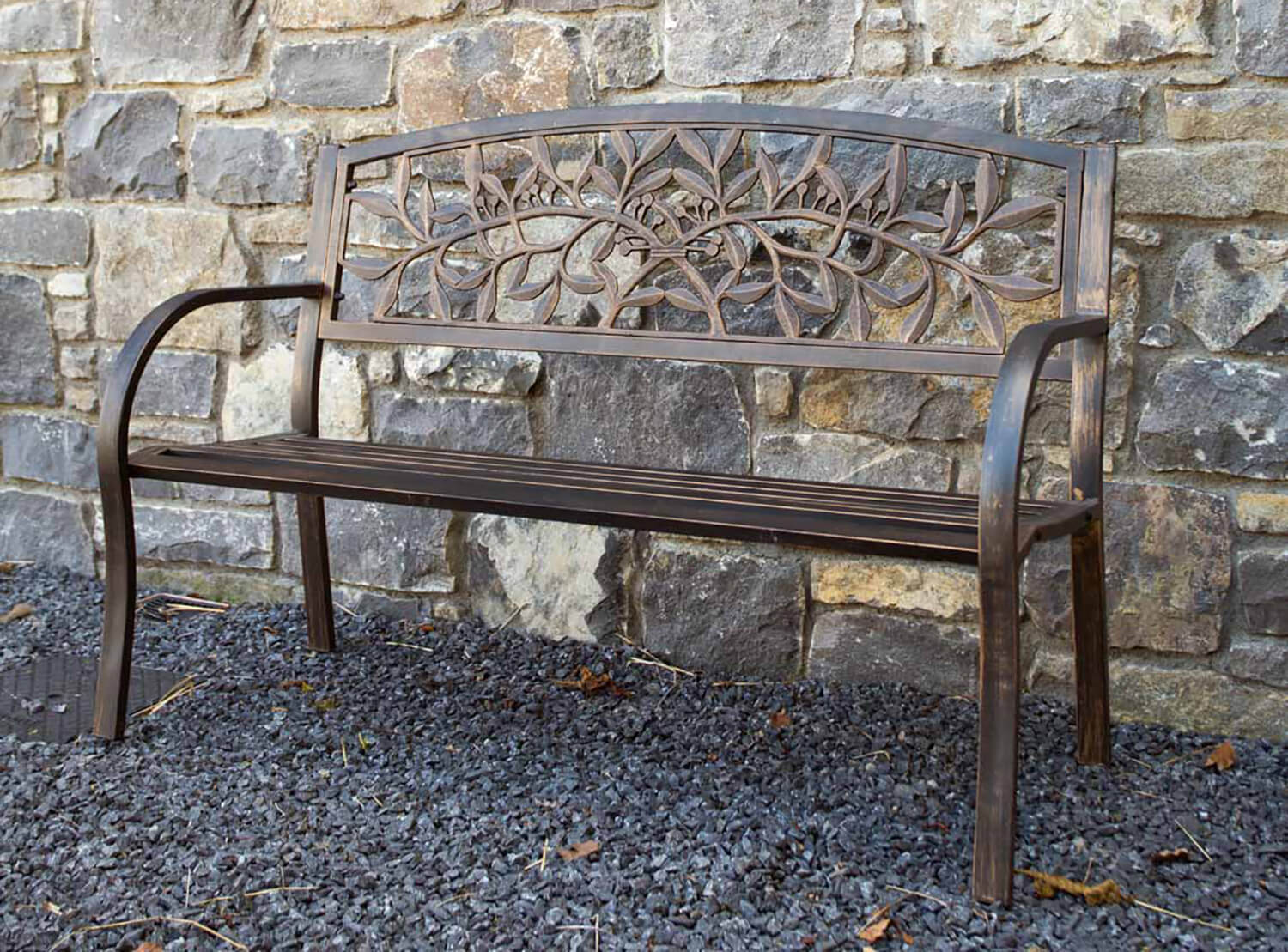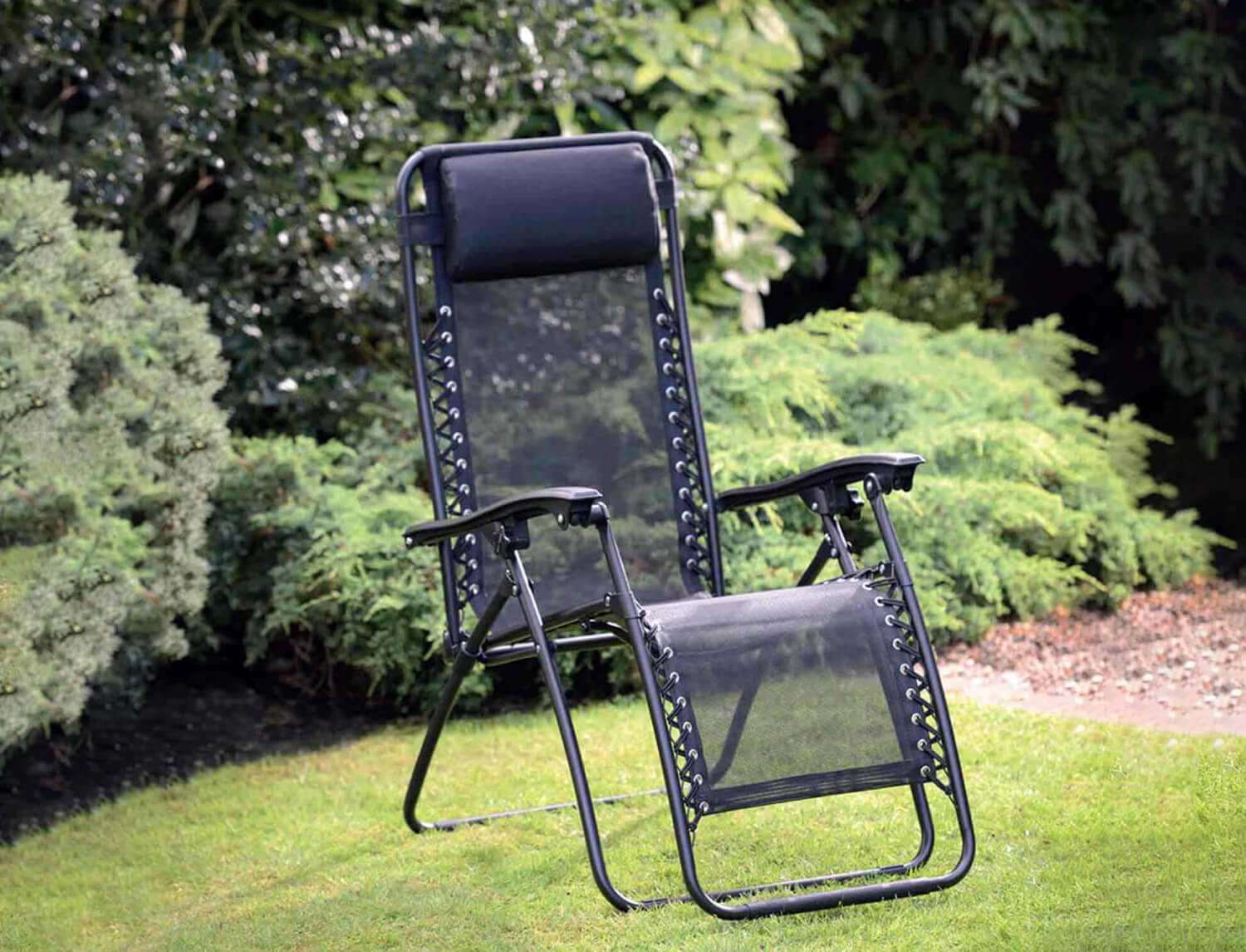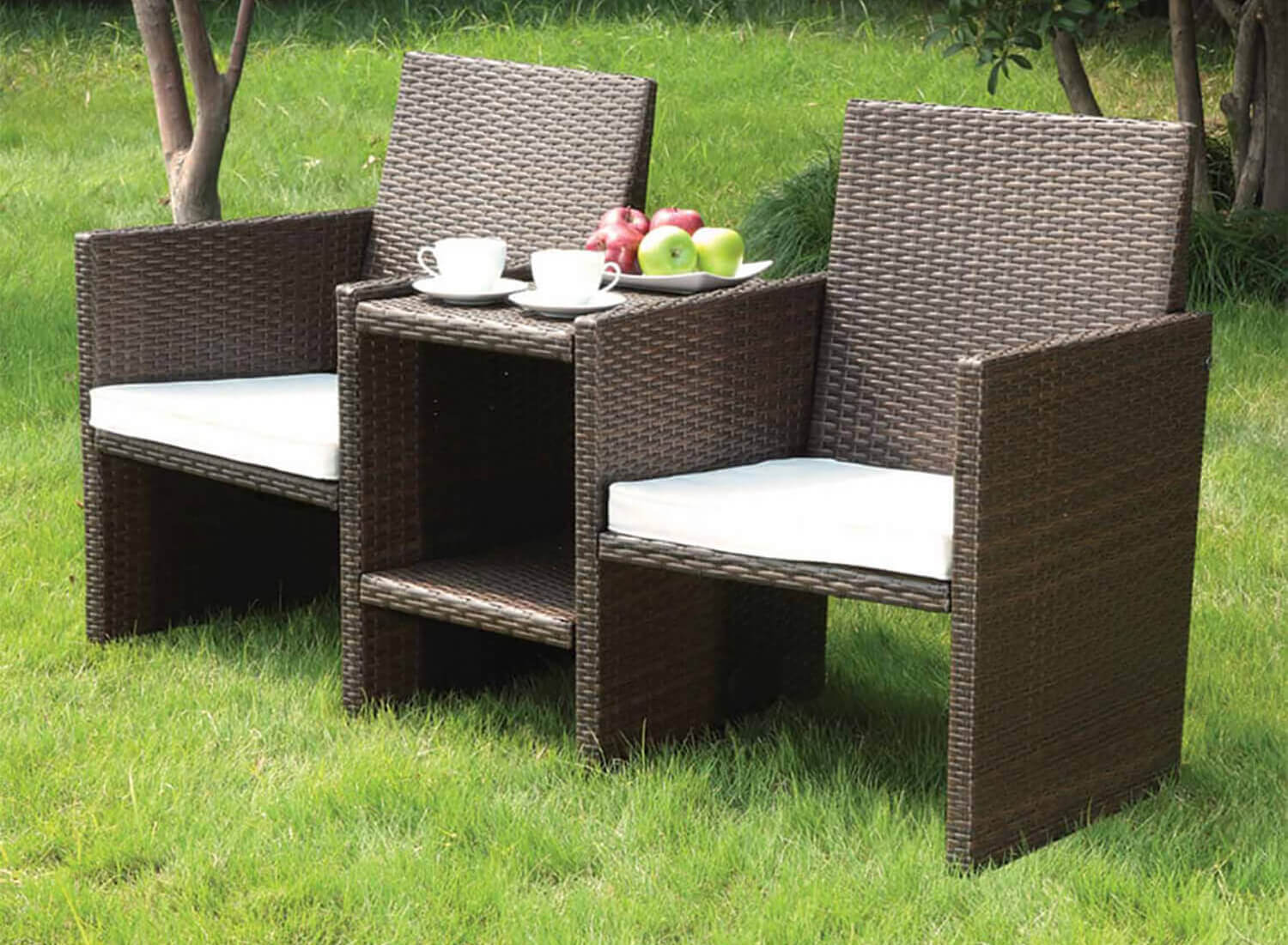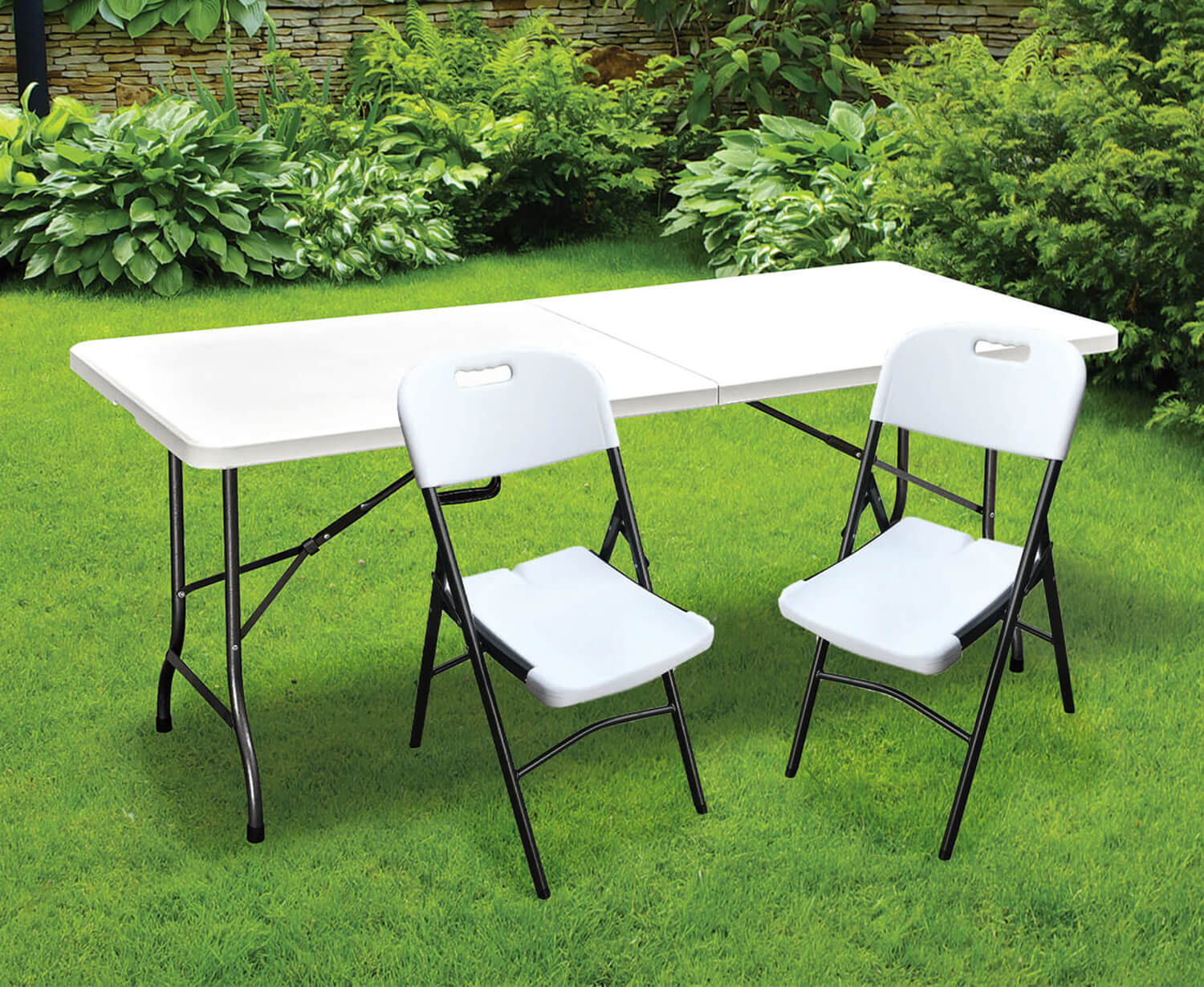Garden Furniture Care Guide
Looking after your Garden Furniture
At the first sign of sun there’s nothing better than relaxing outside, lighting a barbeque and pouring a cool, iced drink. All of which is even more enjoyable if you can appreciate those lazy summer days with garden furniture you know will last for a long time. Garden furniture should be around long enough for you to enjoy it and get the most use out of it. Taking care of your garden furniture not only helps it to last long-term it helps it to look good for longer too - saving you time and money. Our helpful guide will give you handy tips and information on how to care for your garden furniture and accessories.

Caring for Steel Furniture
Steel furniture is a popular choice for outdoor furniture due to its classic, versatile look and durability. Different steel can be cast in different ways: from mould - where hot liquids are poured into a design mould; wrought from metals - where they are shaped by hammering; or formed into designs.
Maintenance - Preventing rust is the best way to keep your steel furniture looking good and lasting for a long time. It is recommended to cover steel furniture or store it someplace dry when not in use, as exposure to the harsh elements such as wind and rain can damage your furniture. If steel furniture has been exposed to wet conditions, it is best to dry off the furniture with a clean cloth to prevent water accumulating and rush building up. Any 'bubbles' of paint that are forming on your furniture are an indication that rust is developing beneath the coating, so it is best to remove these bubbles gently with a wire gauze and touch up the area with car paint to prevent further rusting.
Deep Cleaning - Keep car paint handy so you can touch up any blemishes that you see on your furniture. Mix together lukewarm water and a gentle soap that you would use for hand-washing. Scrub the furniture gently with a clean cloth, removing any dirt or debris. Rinse the furniture with a bucket of clean water - do not use a hose as the water pressure could cause further paint damage and chipping. Let it dry, and check for signs of rust. You can gently sand off any further flakes or chips of paint that you see, with circular motions using a wire gauze. Use car paint in a matching colour to gently touch up any areas that need care.
Caring for Aluminium Furniture
Aluminium furniture is lightweight, easy to clean and requires little maintenance. It has rust proof properties so that when it is exposed to air, it will develop a layer of oxide, preventing it from developing a build-up of rust. Often aluminium furniture is combined with other materials to enhance its design, so it is important to check the care guides for these materials also.
Maintenance - Even though aluminium garden furniture will not rust, it can become discoloured or corroded when it is affected by harsh weather or pollution. It is always a good idea to cover your aluminium garden furniture when it is not in use, or keep it in a dry place in order to prevent it becoming dirty or discoloured.
Deep Cleaning - Apply a coat of car wax to your aluminium furniture to keep it shiny and clean. Wash your furniture with lukewarm water and a gentle soap. Adding acid such as lemon juice or vinegar will help your furniture to keep its shine. If the colour has worn away due to chemicals, it can be treated with a touch up of matching car paint to disguise these blemishes.


Caring for Rattan Furniture
Resin or rattan effect wicker furniture is a synthetic material that has the look and design of real wicker but is much more durable. It has the aesthetic of real wicker but has an in-built resistance to the elements. Due to its properties, it can be kept outside in hot or cold weather without losing its colour and can be left out all year round. However it is recommended to cover or store your rattan effect furniture during periods when it is not in use as adverse weather conditions can - over time - deteriorate the furniture. Most rattan effect garden furniture is woven over a steel or aluminium base to increase sturdiness while maintaining a lightweight feel, making it ideal for outdoor furniture.
Maintenance - It's always a good idea to cover your rattan effect garden furniture when not in use, or store it someplace dry, as this will lessen its exposure to the elements.
Deep Cleaning - Keep rattan effect furniture away from sources of direct heat such as barbeques or outdoor heaters, as the heat can damage the fibres causing it to melt. Clean your rattan effect furniture regularly to prevent build-up of dirt and grime in the small, interwoven spaces. Spray the furniture lightly with a hose, washing off all dirt and debris. Mix together lukewarm water with a gentle soap that you use for hand washing. Lightly scrub the furniture using a soft bristle hand-held brush - this is ideal for removing dirt from smaller spaces.
Caring for Plastic Furniture
Plastic furniture can be a great addition to your outdoor area due to its durability and easy maintenance. This type of furniture requires little maintenance and is ideal for kids, as it can be wiped down easily and moved around the garden or indoors if necessary. This type of furniture can be blended with aluminium steel or wood among other products, so check the care guidelines of each material when cleaning.
Maintenance - Plastic garden furniture can be left out all year round, however it is a good idea to store it in a dry place when it is not in use or in bad weather conditions. If other materials such as wood or aluminium steel are blended with the plastic, storing this furniture when not in use or in harsh weather conditions can prolong its lifespan.
Deep Cleaning - If using water and bleach to clean plastic, fill the mixture in a handy spray bottle, protecting your hands. Wipe all dirt and debris from your plastic furniture with a dry cloth. Mix together lukewarm water and a household soap, and gently wipe down the surfaces with a soft, absorbent cloth. If some stains will not budge, mix together some lukewarm water and a small amount of bleach and wipe down the surface - make sure to wear gloves if using bleach to protect your hands. Leave to dry naturally or wipe away with a clean towel.

Garden Furniture Care Guide
Looking after your Garden Furniture
At the first sign of sun there’s nothing better than relaxing outside, lighting a barbeque and pouring a cool, iced drink. All of which is even more enjoyable if you can appreciate those lazy summer days with garden furniture you know will last for a long time. Garden furniture should be around long enough for you to enjoy it and get the most use out of it. Taking care of your garden furniture not only helps it to last long-term it helps it to look good for longer too - saving you time and money. Our helpful guide will give you handy tips and information on how to care for your garden furniture and accessories.

Caring for Steel Furniture
Steel furniture is a popular choice for outdoor furniture due to its classic, versatile look and durability. Different steel can be cast in different ways: from mould - where hot liquids are poured into a design mould; wrought from metals - where they are shaped by hammering; or formed into designs.
Maintenance - Preventing rust is the best way to keep your steel furniture looking good and lasting for a long time. It is recommended to cover steel furniture or store it someplace dry when not in use, as exposure to the harsh elements such as wind and rain can damage your furniture. If steel furniture has been exposed to wet conditions, it is best to dry off the furniture with a clean cloth to prevent water accumulating and rush building up. Any 'bubbles' of paint that are forming on your furniture are an indication that rust is developing beneath the coating, so it is best to remove these bubbles gently with a wire gauze and touch up the area with car paint to prevent further rusting.
Deep Cleaning - Keep car paint handy so you can touch up any blemishes that you see on your furniture. Mix together lukewarm water and a gentle soap that you would use for hand-washing. Scrub the furniture gently with a clean cloth, removing any dirt or debris. Rinse the furniture with a bucket of clean water - do not use a hose as the water pressure could cause further paint damage and chipping. Let it dry, and check for signs of rust. You can gently sand off any further flakes or chips of paint that you see, with circular motions using a wire gauze. Use car paint in a matching colour to gently touch up any areas that need care.
Caring for Aluminium Furniture
Aluminium furniture is lightweight, easy to clean and requires little maintenance. It has rust proof properties so that when it is exposed to air, it will develop a layer of oxide, preventing it from developing a build-up of rust. Often aluminium furniture is combined with other materials to enhance its design, so it is important to check the care guides for these materials also.
Maintenance - Even though aluminium garden furniture will not rust, it can become discoloured or corroded when it is affected by harsh weather or pollution. It is always a good idea to cover your aluminium garden furniture when it is not in use, or keep it in a dry place in order to prevent it becoming dirty or discoloured.
Deep Cleaning - Apply a coat of car wax to your aluminium furniture to keep it shiny and clean. Wash your furniture with lukewarm water and a gentle soap. Adding acid such as lemon juice or vinegar will help your furniture to keep its shine. If the colour has worn away due to chemicals, it can be treated with a touch up of matching car paint to disguise these blemishes.


Caring for Rattan Furniture
Resin or rattan effect wicker furniture is a synthetic material that has the look and design of real wicker but is much more durable. It has the aesthetic of real wicker but has an in-built resistance to the elements. Due to its properties, it can be kept outside in hot or cold weather without losing its colour and can be left out all year round. However it is recommended to cover or store your rattan effect furniture during periods when it is not in use as adverse weather conditions can - over time - deteriorate the furniture. Most rattan effect garden furniture is woven over a steel or aluminium base to increase sturdiness while maintaining a lightweight feel, making it ideal for outdoor furniture.
Maintenance - It's always a good idea to cover your rattan effect garden furniture when not in use, or store it someplace dry, as this will lessen its exposure to the elements.
Deep Cleaning - Keep rattan effect furniture away from sources of direct heat such as barbeques or outdoor heaters, as the heat can damage the fibres causing it to melt. Clean your rattan effect furniture regularly to prevent build-up of dirt and grime in the small, interwoven spaces. Spray the furniture lightly with a hose, washing off all dirt and debris. Mix together lukewarm water with a gentle soap that you use for hand washing. Lightly scrub the furniture using a soft bristle hand-held brush - this is ideal for removing dirt from smaller spaces.
Caring for Plastic Furniture
Plastic furniture can be a great addition to your outdoor area due to its durability and easy maintenance. This type of furniture requires little maintenance and is ideal for kids, as it can be wiped down easily and moved around the garden or indoors if necessary. This type of furniture can be blended with aluminium steel or wood among other products, so check the care guidelines of each material when cleaning.
Maintenance - Plastic garden furniture can be left out all year round, however it is a good idea to store it in a dry place when it is not in use or in bad weather conditions. If other materials such as wood or aluminium steel are blended with the plastic, storing this furniture when not in use or in harsh weather conditions can prolong its lifespan.
Deep Cleaning - If using water and bleach to clean plastic, fill the mixture in a handy spray bottle, protecting your hands. Wipe all dirt and debris from your plastic furniture with a dry cloth. Mix together lukewarm water and a household soap, and gently wipe down the surfaces with a soft, absorbent cloth. If some stains will not budge, mix together some lukewarm water and a small amount of bleach and wipe down the surface - make sure to wear gloves if using bleach to protect your hands. Leave to dry naturally or wipe away with a clean towel.

